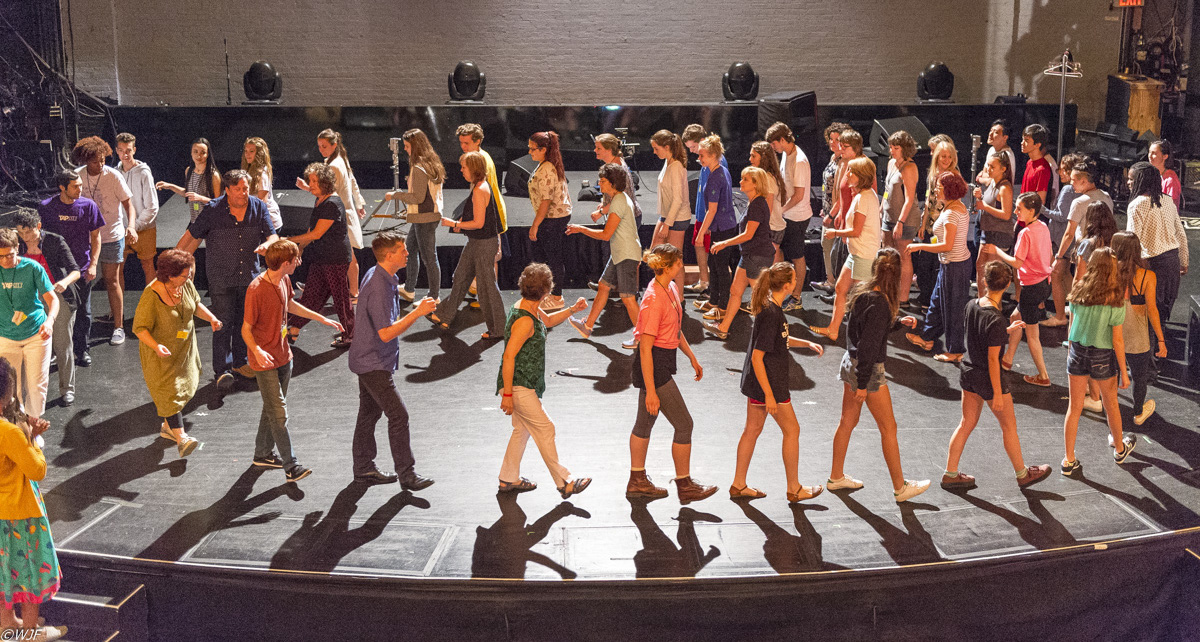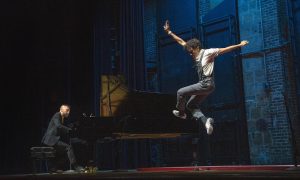There’s no denying the magical charm that tap dance has with the variation of rhythms that can be made with your feet. From Broadway to more modern styles, tap plays an essential role as an art form in the dance community. The American Tap Dance Foundation (ATDF), originally known as the American Tap Dance Orchestra, has been reinforcing the importance of tap since 1986 through four fundamental tools: creation, presentation, education and preservation.
Initially created, choreographed and directed by master tapper Brenda Bufalino, ATDF was also founded by Bufalino along with Tony Waag and the late Charles “Honi” Coles as a charitable organization. Since 2001, under the artistic direction and guidance of Waag, ATDF continues to impact people of all ages as an arts organization. The American Tap Dance Center serves as a home to ATDF and offers year-round educational programs for youth, teens and adults. By making classes accessible to a variety of ages and people, there has been a remarkable influx of middle-aged adults over the last couple of years.
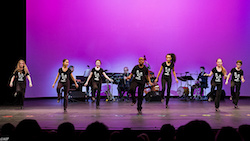
Tap City Youth Ensemble. Photo by Wallace Flores.
“I think, especially now, that there is more of an awareness of tap dance internationally, so people are returning to the art form and growing from it,” says Waag. “There’s a broad age group of people showing more and more interest in learning tap.”
Susan Hebach, director of ATDF’s Youth Program and Tap City Youth Ensemble, gives her perspective on how the tap styles taught have evolved over time within ATDF.
“We teach technique that is rooted in the classic dances of Copasetics, which includes dances such as ‘The Coles Stroll’ by Honi Coles, ‘Doin’ the New Low Down’ by Bill Robinson, and the ‘Shim Sham’ by Leonard Reed, among others,” Hebach tells Dance Informa. “We also explore current styles, global rhythms and modern choreographers as well, especially with the more advanced students and the Tap City Youth Ensemble.
“Although we are very rooted in rhythm tap, we are also contemporary in the vision and musicality aspect of tap,” says Waag. “I like the variety within the tap styles.”
Besides some of the great programs found within ATDF, there are equally amazing events and performances that they host each year. These performances and events cater to the adult and youth programs, and showcase original material by teachers from ATDF’s program, as well as master artists.
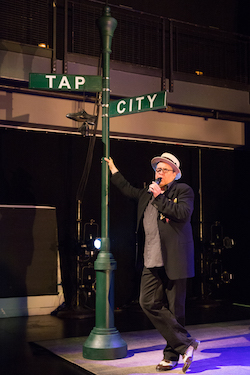
Tony Waag in ‘Tap Treasures’ during Tap City 2016. Photo by Amanda Gentile.
Hebach says, “In our Adult and Youth programs, there is a Holiday Showcase each December, and an end-of-the-season presentation in June, and our Youth Ensembles (Tap City Jr. Ensemble and Tap City Youth Ensemble) perform throughout the year at different venues and events such as the ‘Second Sundays’ event at Lenox Hill Neighborhood House in NYC.”
“In the spring, we do Rhythm in Motion, which is a culminating event where we’ll have anywhere from 12 to 13 artists and residents showcasing new material,” Waag explains. “Along with that, we have student showcases as well.”
With the various shows and learning opportunities offered at ATDF, there is still room for growth within the foundation, according to Waag.
“I think that now is the time to expand our space and offer an addition to our facility dedicated to new projects and performances,” Waag adds. “Even if it’s a small black box theater, it would be great to have a space dedicated to dance, and not just rehearsals.”
Hebach shares, “Honestly, I hope we can grow an appreciative audience. Tap dance is a deep form, and there are so many layers to experience and understand in any given performance. Tap dance is often not given the same importance or same level of stature as ballet or modern dance, so I would hope that through our work here at ATDF, we could continue to educate others to be on more of an equal footing with other forms in the future.”
Tap dance can be deemed either “too simple” or “too difficult” for those on the outside looking in, but what makes tap such a wonderful style, according to Waag, is that it embraces every type of person, level and body type. ATDF strives to offer a comfortable environment for beginner and advanced tappers alike to learn and enjoy.
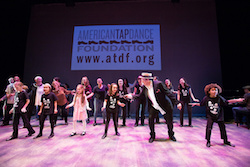
American Tap Dance Foundation. Photo by Amanda Gentile.
For those who may hesitate when it comes to learning tap, Waag says, “Try it, you’ll like it. It’s all about striking the right balance and experimenting until you find a teacher you really enjoy.”
Likewise, Hebach encourages anyone who is on the fence about tap to “jump in and give it a try”.
She concludes, “What could be more fun than having musical instruments on your feet and dancing with the band?”
To learn more about the American Tap Dance Foundation, visit www.atdf.org.
By Monique George of Dance Informa.
Photo (top): Participants doing the Coles Stroll at the Apollo, Tap Treasures Tour during Tap City 2016. Photo by Wallace Florres.


